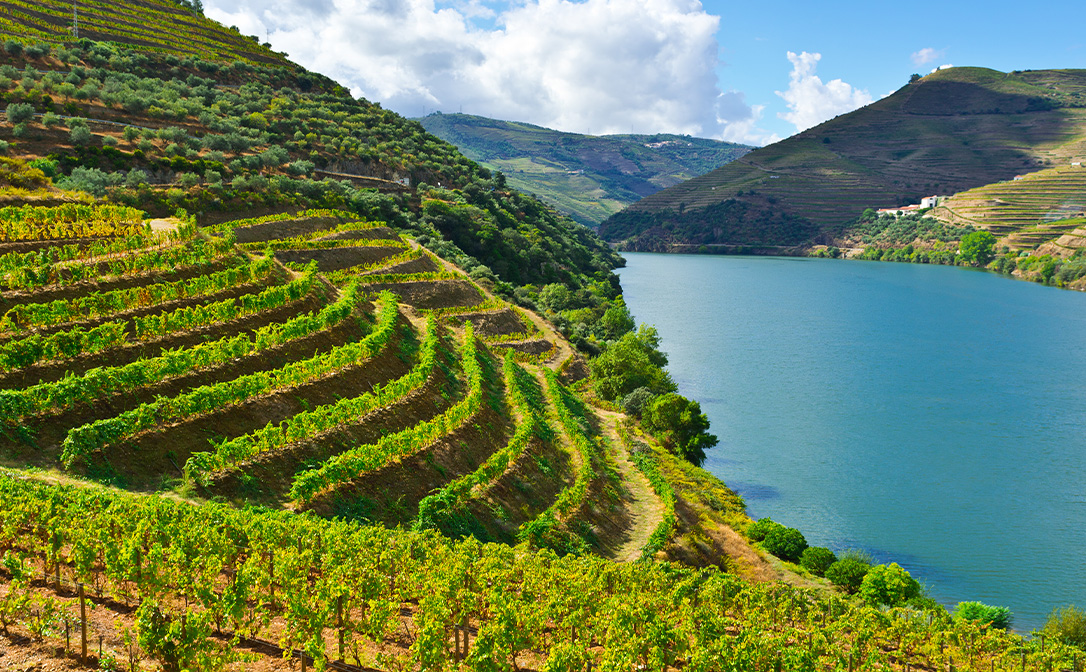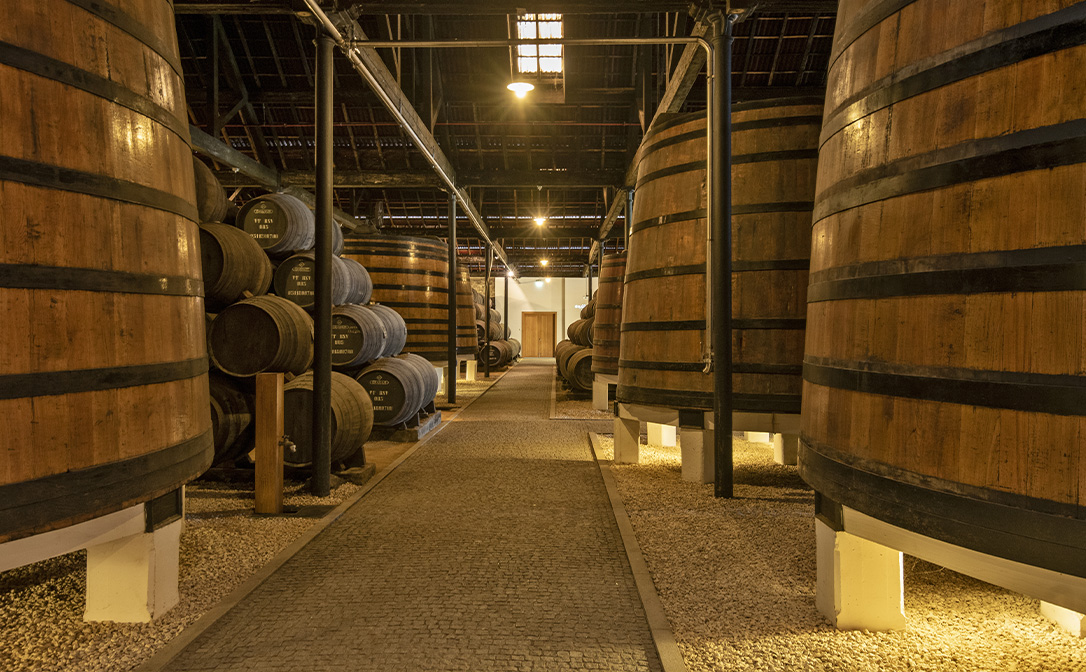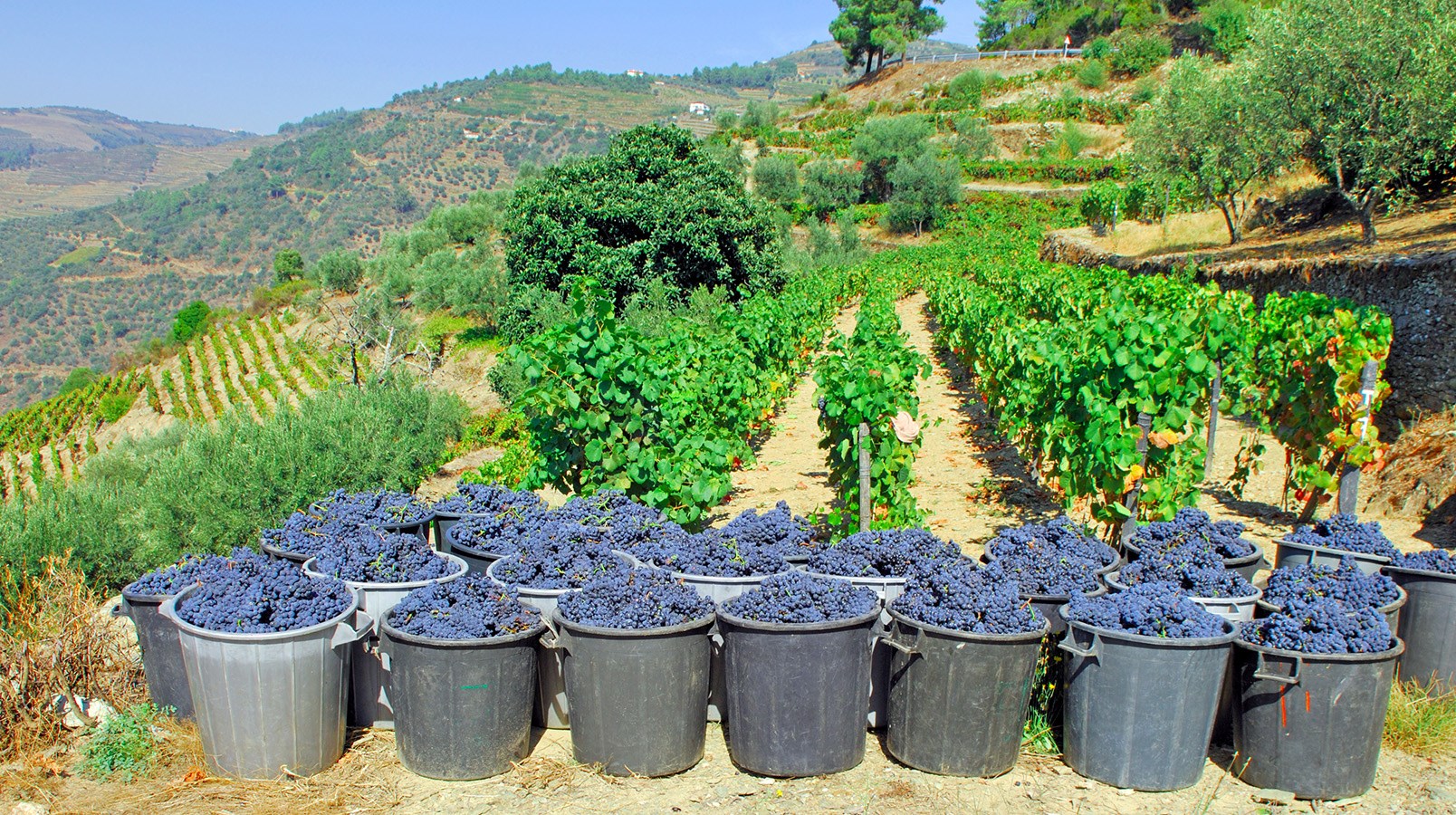As families and friends come together to celebrate the festive season across the world, many of us might be opting for traditional beverages. One of the most coveted Christmas drinks is Port, but how much do you really know about this sweet, fortified phenomenon?
Portugal produces four types of fortified wines (Port, Madeira, Moscatel de Setúbal and Carcavelos), but Port is undoubtedly the most well-known across the world. It comes in a range of styles, but all must be made from grapes (white or black) grown in the Douro Valley.

Vineyards in the Douro Valley, Portugal
The Douro is one of the oldest demarcated and regulated wine regions in the world (1756), but Port wine as we know it today, a sweet fortified wine, only gained universal acceptance within the region around the 1850s. Historically, it was a dry wine, fortified after fermentation to stabilise it over long journeys over the sea.
After the grapes are hand-picked (many vineyards are located on very steep valleys which makes machine-harvesting difficult), they are crushed, and fermentation starts. There is only a short period of fermentation before the fortifying spirit is added, killing the yeast and resulting in a high level of residual sugar in the wine. Given the fermentation period is so short, techniques are required that quickly extract a lot of colour, tannin and flavour from the grapes. Some producers use robotic paddles that are unique to winemaking in the region, and some still use the traditional practice of foot treading for their finest wines. The spirit used for fortification is called “aguardente” (a local spirit of 77% ABV, which translates literally to “burning water”) and tends to bring a 'spirity' note to all styles of this beverage.

Port wines ageing in oak barrels
Today, there are four main types: Ruby, Tawny, Rose and White. The first three are produced with black grapes, and the last one with white grapes.
Ruby style Ports have a ruby colour. This colour comes from the fact that these wines are protected from oxidation during their production and maturation. Aromas and flavours are usually of red and black fruit and chocolate. Ruby-style Ports include the following categories: Ruby, Reserve Ruby, LBV, Vintage and Crusted.
Tawny style Ports have a tawny/brown colour. Many of these wines undergo a long period of oxidative ageing, and the best examples develop aromas and flavours of dried fruits, caramel and coffee notes. It includes the following categories: Tawny, Reserve Tawny, Tawny with an indication of Age (10 YO, 20 YO, 30 YO, 40YO, 50YO, +80YO), Colheita and Garrafeira.
If you're ready to sign up for a course to keep learning about the different styles of wine, head to our Where to Study page to find the right course provider for you.
This blog was written by Sara Rodrigues e Matos, WSET Certified Educator, The Wine House
Watch the festive edition of WSET Bitesize as we looked exclusively at this fortified wine. You can catch it on demand here.
Related content:
- Sherry and food - the perfect match
- Português
- Understanding grapes: spotlight on Riesling in Germany


